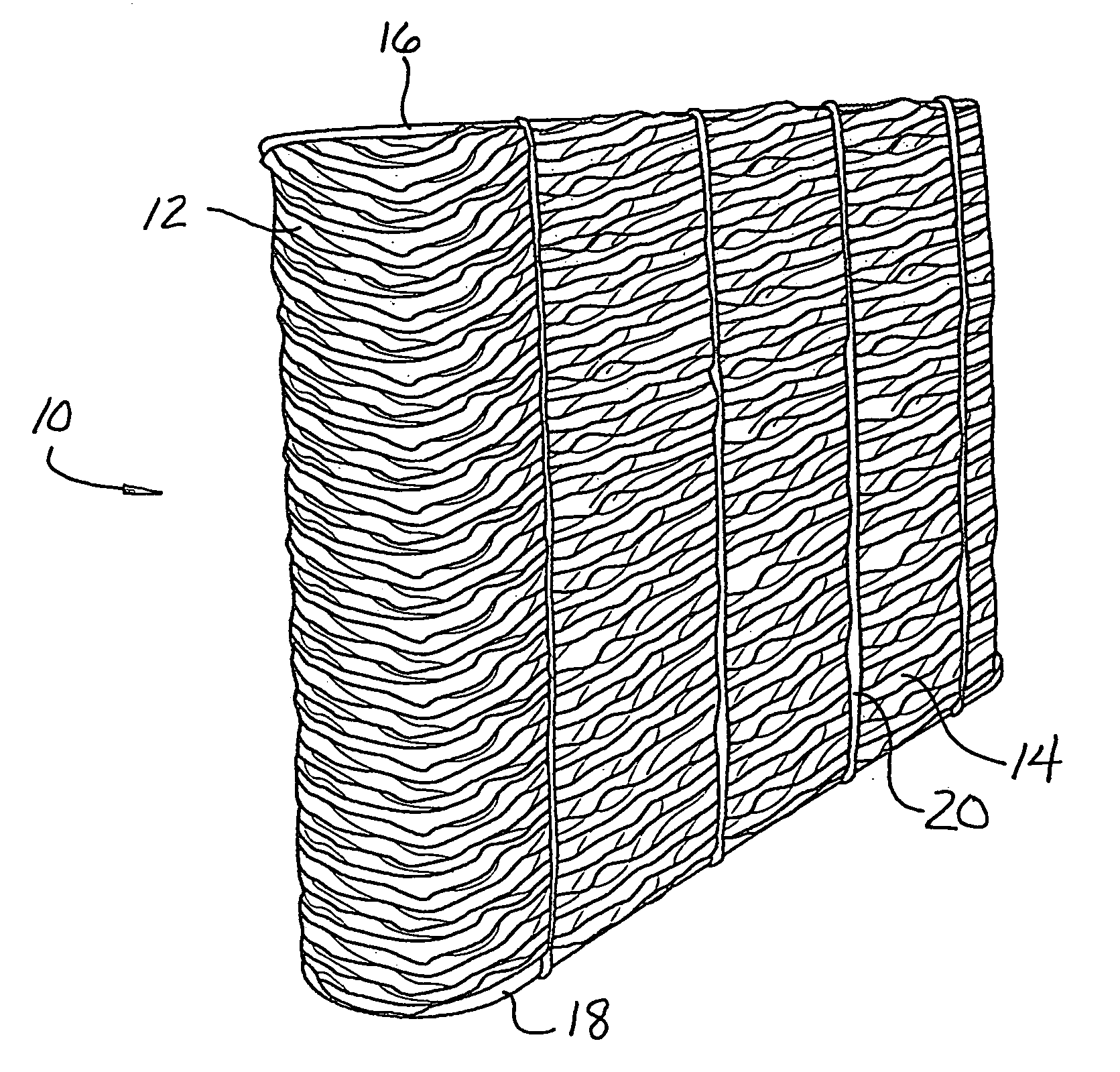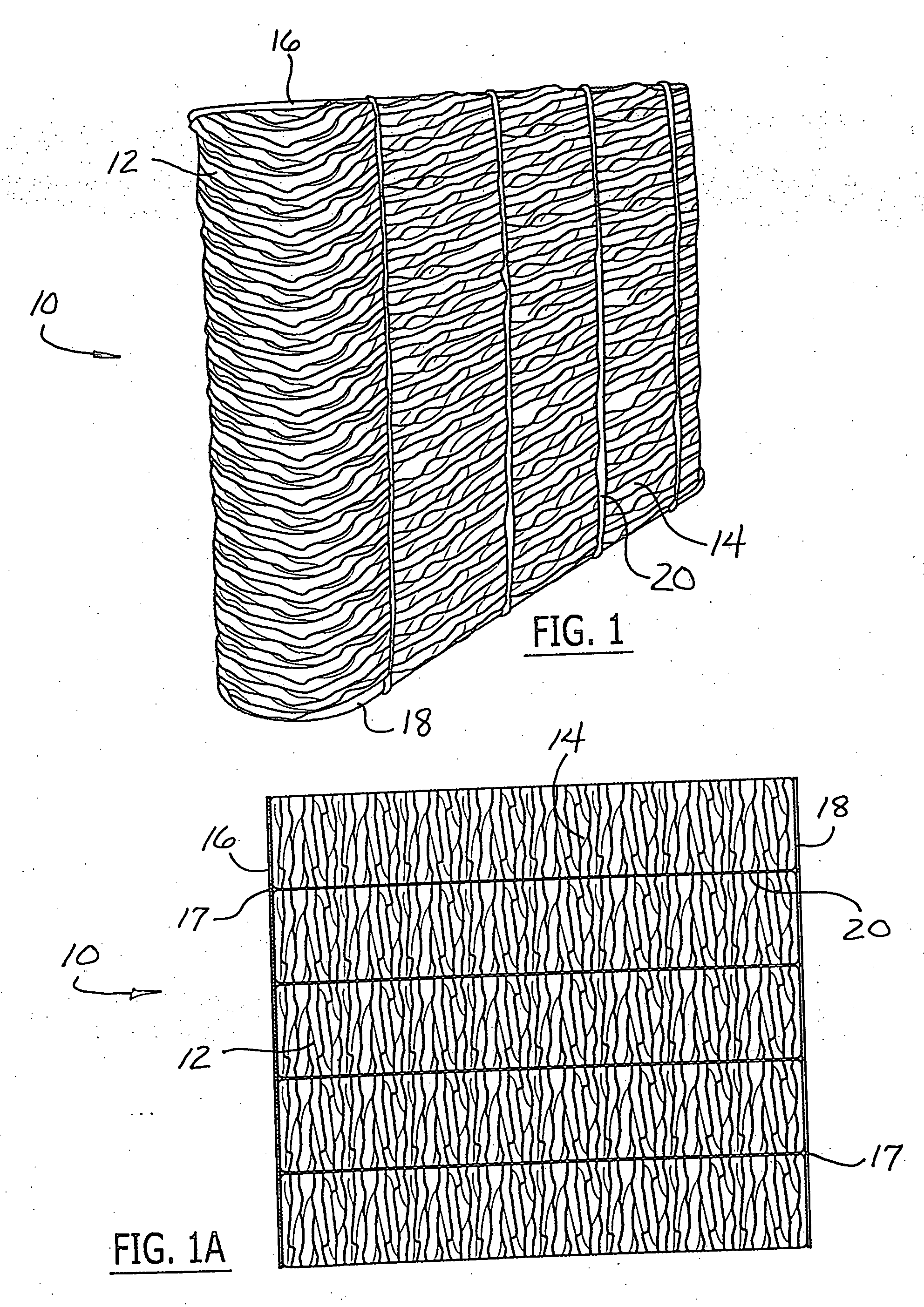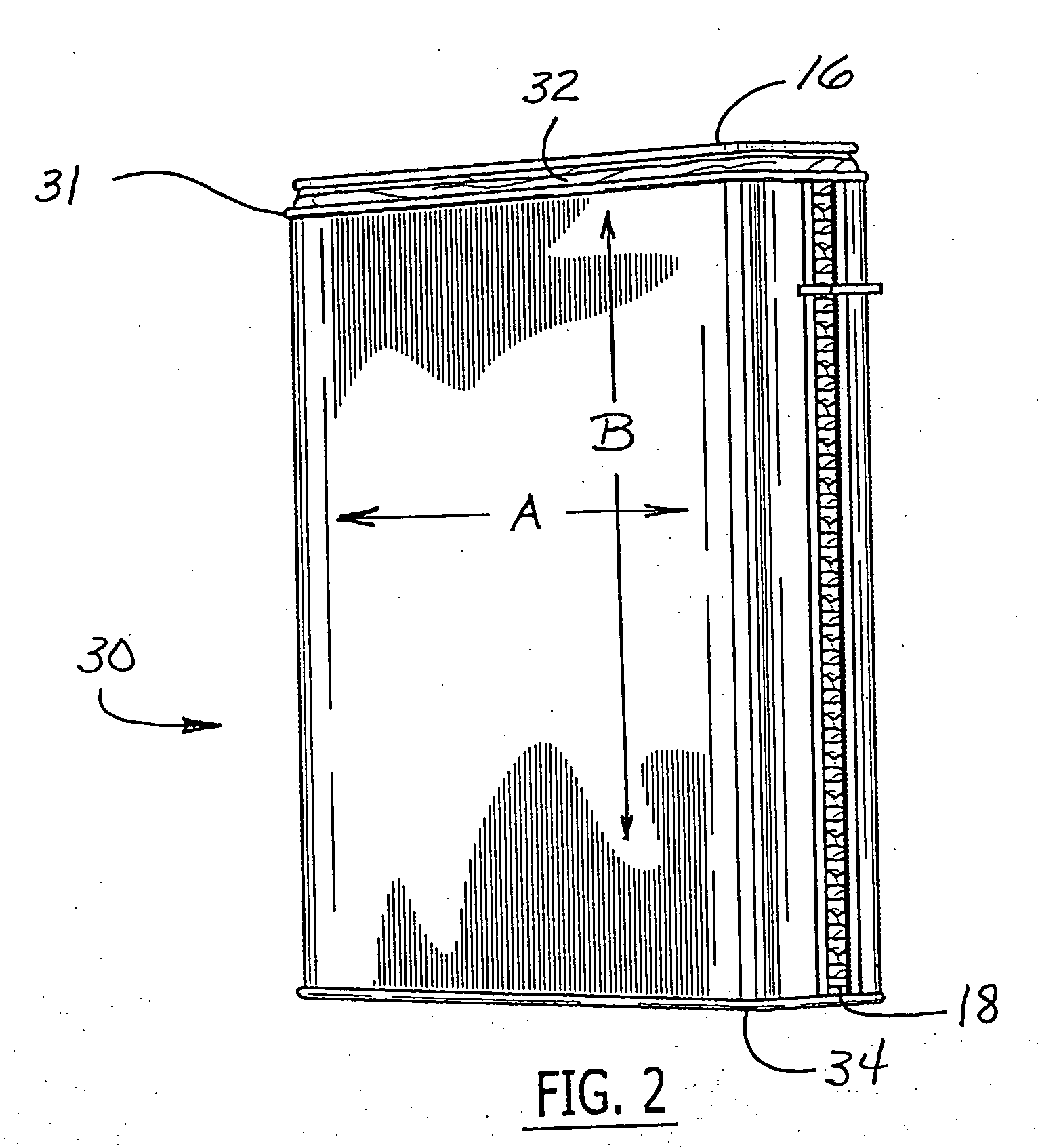System and method for packaging cotton sliver
a packaging system and cotton sliver technology, applied in the field of system and method for packaging cotton sliver, can solve the problems of inconvenient packaging, difficult packaging of sliver, and inefficient process
- Summary
- Abstract
- Description
- Claims
- Application Information
AI Technical Summary
Benefits of technology
Problems solved by technology
Method used
Image
Examples
Embodiment Construction
[0029] Referring now to the drawings, FIGS. 1 and 1A illustrate, respectively in perspective and side views, a sliver package 10 according to the present invention which has been compressed and banded for efficient transport. Sliver package 10 includes a substantially continuous length 12 of cotton sliver accumulated into a pile that has an oblong footprint. The density of the pile of cotton sliver is substantially uniform throughout because the sliver draft 12 has been laid in a pattern of offset loops designed to produce a uniform density as compared to the density produced when sliver is laid with a circular footprint in conventional systems.
[0030] In FIGS. 1 and 1A, the pile has been compressed to a substantially higher, substantially uniform compressed density such that the sides 14 of the sliver package 10 are sufficiently rigid and coherent as to allow the package to be handled without damaging or disturbing the sliver draft 12 at the sides 14 of the sliver package 10. Becau...
PUM
| Property | Measurement | Unit |
|---|---|---|
| Pressure | aaaaa | aaaaa |
| Pressure | aaaaa | aaaaa |
| Density | aaaaa | aaaaa |
Abstract
Description
Claims
Application Information
 Login to View More
Login to View More - R&D
- Intellectual Property
- Life Sciences
- Materials
- Tech Scout
- Unparalleled Data Quality
- Higher Quality Content
- 60% Fewer Hallucinations
Browse by: Latest US Patents, China's latest patents, Technical Efficacy Thesaurus, Application Domain, Technology Topic, Popular Technical Reports.
© 2025 PatSnap. All rights reserved.Legal|Privacy policy|Modern Slavery Act Transparency Statement|Sitemap|About US| Contact US: help@patsnap.com



